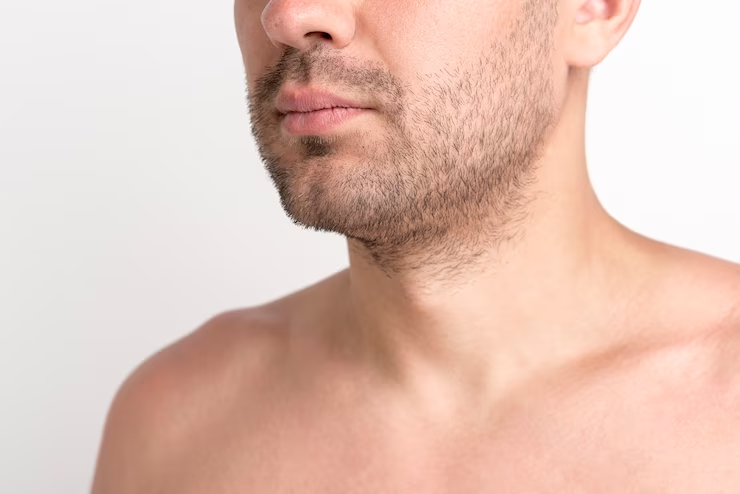
Are stubborn acne scars making you self-conscious and longing for smoother, clearer skin? If so, you're not alone. Acne scars can linger long after the blemishes have cleared, leaving a lasting reminder of the past. However, there is hope in the form of a revolutionary skincare treatment known as microdermabrasion.
In this article, we'll delve into the world of microdermabrasion for acne scars, exploring how this technique can help you achieve the complexion you've always dreamed of. So, get ready to discover the power of microdermabrasion and say goodbye to those pesky acne scars for good.
What is Microdermabrasion?
Microdermabrasion, a popular cosmetic procedure, has gained significant recognition for its effectiveness in improving various skin concerns, including acne scars. This non-invasive treatment utilizes advanced exfoliation techniques to rejuvenate the skin's appearance and texture. By gently removing the outermost layer of dead skin cells, microdermabrasion reveals a fresh, radiant complexion underneath.
Specifically addressing acne scars, microdermabrasion works by targeting the damaged areas where scarring has occurred. The procedure can be performed using two primary methods:
crystal microdermabrasion
anddiamond microdermabrasion
. Crystal microdermabrasion involves spraying fine crystals onto the skin's surface, while diamond microdermabrasion utilizes a diamond-tipped wand to exfoliate the skin.How Microdermabrasion Helps with Acne Scars
Microdermabrasion has emerged as a sought-after solution for those seeking to diminish the appearance of acne scars. This innovative treatment offers many benefits, making it an effective option for improving the overall texture and complexion of the skin.
Here are a few benefits of microdermabrasion for acne scars:
Exfoliates the skin, removing the outer layer of dead skin cells
Targets the areas affected by acne scars, promoting the growth of new skin cells
Gradually reduces the visible signs of scarring and improves skin texture
Stimulates collagen production, which helps plump and fills in depressed areas caused by acne scars
Enhances the absorption of skincare products, maximizing their effectiveness in treating acne scars
Minimal downtime and discomfort
Can be customized to suit individual skin types and concern
Provides a versatile option for individuals seeking to address their acne scars
Improves overall skin health and appearance
Offers convenience and convenience for scar treatment
The Microdermabrasion Process
The microdermabrasion process is a multi-step treatment that harnesses the power of exfoliation to improve the appearance of acne scars and rejuvenate the skin. This non-invasive procedure has gained popularity for its effectiveness in addressing various skin concerns, including acne scars.
Here is an overview of the microdermabrasion process and how it works to provide the benefits of improved skin texture and diminished acne scars:
Skin preparation
Before undergoing microdermabrasion for acne scars, the skin is thoroughly cleansed to remove any makeup, oils, or debris. This ensures optimal contact between the skin and the microdermabrasion device, maximizing the effectiveness of the treatment and enhancing microdermabrasion results.
Exfoliation
During the microdermabrasion treatment for acne scars, a handheld device with a specialized tip is used to gently exfoliate the skin's surface. The device delivers a controlled stream of fine crystals or a diamond-tipped wand, which abrades the outermost layer of the skin, effectively removing dead skin cells and encouraging cellular turnover.
Suction
Simultaneously with exfoliation, the microdermabrasion device utilizes suction to remove the exfoliated skin cells and debris. This suction action helps to stimulate blood flow, promote lymphatic drainage, and enhance the overall circulation in the treated area. It also aids in the removal of clogged pores and promotes a clearer complexion.
Precision and customization
The microdermabrasion process can be tailored to target specific areas affected by acne scars. The skincare professional can adjust the intensity of exfoliation and suction based on individual needs, ensuring a personalized treatment approach that addresses acne scars effectively and delivers desired microdermabrasion results.
Comfort and minimal downtime
Microdermabrasion for acne scars is generally a well-tolerated procedure, with minimal discomfort experienced by most individuals. The treatment typically requires no anesthesia, and any temporary redness or mild sensitivity subsides shortly after the session. This allows individuals to resume daily activities with little to no downtime, making microdermabrasion a convenient treatment option.
Gradual improvement and cumulative results
Microdermabrasion treatment for acne scars usually involves a series of sessions spaced a few weeks apart. With each session, the skin's texture and appearance gradually improve as the exfoliation and stimulation of collagen production continue. Cumulative results become more apparent over time, with continued improvements in acne scars, skin tone, and overall complexion.
The microdermabrasion process is generally well-tolerated and requires no downtime. The treatment duration may vary depending on the size of the treated area, but typically, a session can be completed within 30 to 60 minutes. The comfort, minimal downtime, and cumulative nature of microdermabrasion contribute to the overall satisfaction and long-term microdermabrasion results.
Post-Treatment Care and Recovery
After undergoing microdermabrasion for acne scars, it is important to follow proper post-treatment care to optimize results and ensure a smooth recovery process. Here are some essential guidelines to keep in mind:

Moisturize
After undergoing microdermabrasion treatment, it is crucial to moisturize the treated skin to support the healing process and maximize microdermabrasion results. Use a gentle, non-comedogenic moisturizer to hydrate the skin and promote optimal skin rejuvenation.
Sun protection
Protecting your skin from the sun is vital post-microdermabrasion treatment for acne scars. Apply a broad-spectrum sunscreen with an SPF of 30 or higher to shield the treated skin from harmful UV rays. Sun protection prevents further damage and helps maintain the improvements achieved through microdermabrasion.
Avoid harsh products
In the post-treatment phase of microdermabrasion for acne scars, avoiding harsh skincare products that may irritate the treated skin is crucial. Steer clear of exfoliants, retinoids, or acids for a few days to allow the skin to heal properly and avoid potential adverse reactions.
Be gentle with the skin
Handle your skin with care during the recovery period after microdermabrasion treatment for acne scars. Avoid picking or scratching at any scabs or peeling skin that may occur, as it can impede the healing process and potentially lead to complications. Treat the skin gently and let it heal naturally.
Follow the skincare professional's instructions
It is crucial to follow the specific post-treatment instructions your skincare professional provides to ensure optimal recovery and results from microdermabrasion for acne scars. They will provide personalized guidance based on your skin type and the severity of your acne scars. Adhering to their advice is essential for a successful recovery.
Maintain a consistent skincare routine
Once the initial recovery period has passed, maintaining a consistent skincare routine is key to preserving the results achieved through microdermabrasion for acne scars. Use gentle cleansers, moisturizers, and sunscreen daily to protect and nourish the skin. Incorporating products that promote collagen production and target acne scars, such as serums with vitamin C or hyaluronic acid, can further enhance the outcomes of microdermabrasion.
By following these post-treatment care guidelines, individuals can optimize microdermabrasion results for acne scars and effectively support the skin's healing process. Remember to consult with your skincare professional for personalized advice and recommendations based on your specific needs and recovery progress.
Other Treatment Options for Acne Scars
While microdermabrasion is an effective treatment option for acne scars, it's worth exploring other alternatives to determine the best approach for your specific needs. Here are some additional treatment options commonly used for addressing acne scars:
Chemical peels
Chemical peels are a popular treatment option for acne scars, offering effective results with microdermabrasion treatment. These peels involve the application of a chemical solution to exfoliate the skin and improve its texture, including reducing the appearance of acne scars. Combining microdermabrasion with chemical peels can provide enhanced results and a more comprehensive approach to treating acne scars.
Laser resurfacing
Laser resurfacing is a powerful treatment for acne scars that can be used with microdermabrasion. This treatment utilizes high-energy laser beams to precisely target and removes damaged skin, stimulating collagen production and revealing smoother, more rejuvenated skin. Combining laser resurfacing with microdermabrasion treatment can maximize results, effectively addressing acne scars and improving overall skin texture.
Microneedling
Microneedling, when used alongside microdermabrasion treatment, can offer remarkable results for acne scars. This procedure involves using tiny needles to create controlled micro-injuries in the skin, promoting collagen synthesis and skin rejuvenation. The combination of microneedling and microdermabrasion can effectively reduce the appearance of acne scars, leading to improved skin texture and a more youthful complexion.
Dermal fillers
When paired with microdermabrasion treatment, dermal fillers can provide an excellent solution for addressing certain acne scars. Dermal fillers, typically composed of hyaluronic acid, are injected into depressed acne scars to restore volume and create a smoother skin surface. Combining microdermabrasion with dermal fillers can yield natural-looking results, effectively reducing the visibility of acne scars and restoring facial harmony.
Fractional laser therapy
Fractional laser therapy, in combination with microdermabrasion treatment, can be highly beneficial for treating acne scars. This technique delivers laser energy in a fractional pattern, targeting specific areas of the skin and stimulating collagen production. Combining fractional laser therapy with microdermabrasion makes the treatment more comprehensive, addressing acne scars at various depths and promoting overall skin rejuvenation.
Subcision
Subcision involves using a needle to break up fibrous scar tissue, allowing the skin to elevate and reduce the visibility of depressions. Combining subcision with microdermabrasion treatment enhances overall results, providing a comprehensive approach to treating acne scars and achieving smoother skin texture.
By considering these treatment options in conjunction with microdermabrasion for acne scars, individuals can explore a range of approaches to find the most suitable solution for their specific needs. Consulting with a dermatologist or skincare professional is crucial to determine which treatment suits your condition.
To wrap it up…
Microdermabrasion is a highly effective and popular treatment for acne scars, providing remarkable results and numerous benefits. Microdermabrasion targets acne scars through its gentle exfoliation and suction process, improving skin texture and promoting a smoother, more even complexion.
Consider exploring the possibilities of microdermabrasion to transform your skin and embrace a more flawless complexion. Trust the expertise of skincare professionals to guide you through the process and maximize your microdermabrasion results.







